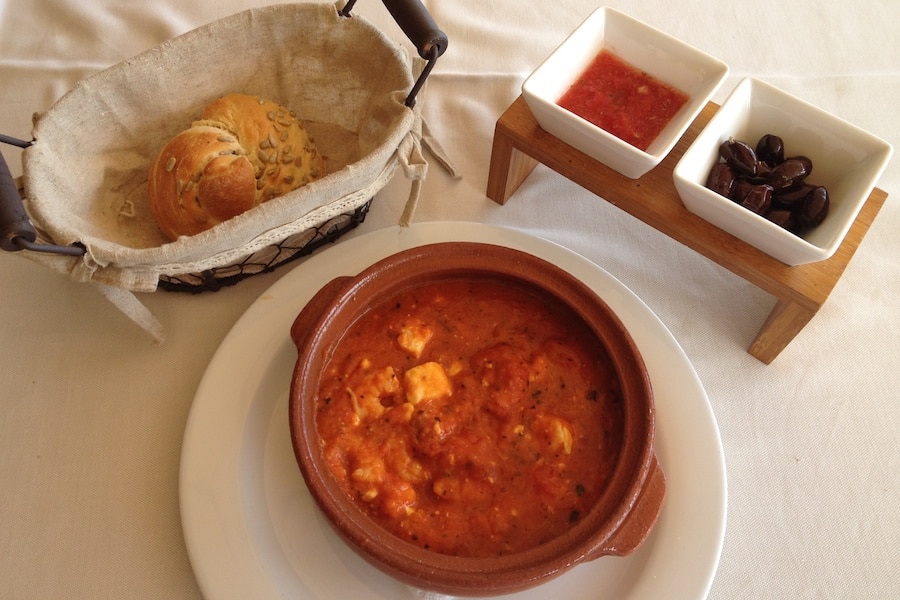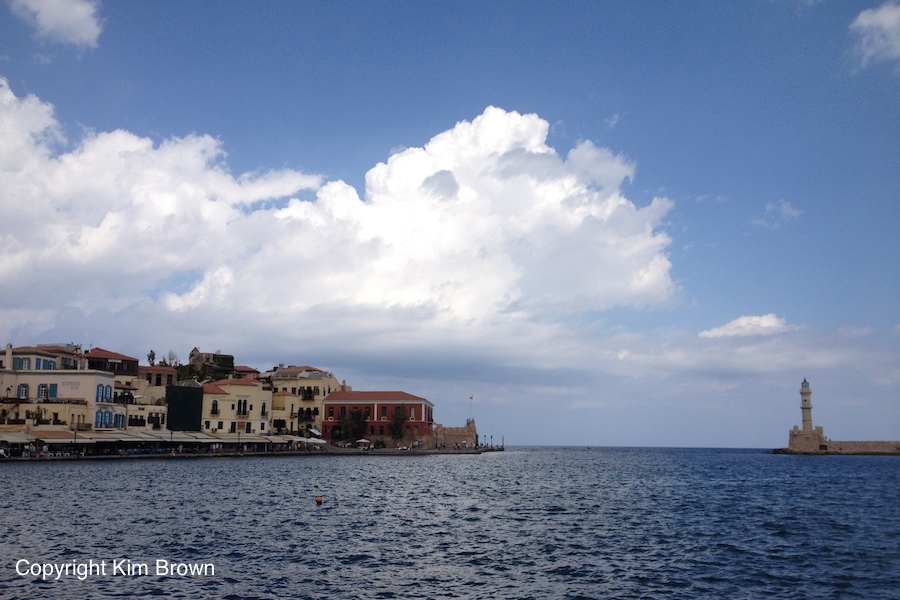 In Greece you can get an assortment of ‘Saganaki’ dishes
In Greece you can get an assortment of ‘Saganaki’ dishes
I think the world ‘Saganaki’ means cheese, in general, but Feta is often used. I’ve had shrimp saganaki, mussels saganaki and just plain old saganaki. When ordering plain old saganaki, the cheese comes breaded and fried. YUM! Seriously – it is amazing!
The Food Network has a great recipe for the shrimp saganaki dish which is somewhat complicated, but if you’re in a hurry OR live on a boat, the following are instructions are for you:
- Get some shrimp (cooked or cook them) or you can use mussels or anything. To make it real easy make sure there is no shell or tail. And also get some pasta sauce and a slab of Feta cheese.
- Grab a crock, throw in the shrimp, chop or crumble up the Feta cheese and add to the shrimp. Cover in pasta sauce and bake in the oven for 20 – 30 minutes. Serve with fresh bread to dip, soak and scoop up the loveliness of shrimp, cheese and sauce.
I’m not kidding when I say this simple dish will make anyone happy
Shrimp saganaki truly is one of the best and easiest meals to make and consume. You can serve it in individual crocks as an appetiser or make enough for a main meal. I’ve had it over 10 times in 4 months and every time I say the same thing…’I must remember to cook this when I return back to living on the land!’

The photo of the shrimp saganaki was taken from a restaurant in Chania, Crete in Greece…and the view directly above, was our view while I enjoyed the lovely tastes.
Kefalograviera, (mixture of goat and sheep milk to make cheese) and Halloumi (goat cheese) are the most common cheeses used to make saganaki. Kefal is my favourite. Layton loves Sag (he calls it “fire cheese”) so much that he is quite the connoisseur and only eats sag made with kefal. It has a completely different texture to halloumi which is a lot more chewy. Kids are more into food texture than we are. Both quite salty cheeses. Oddly, enough we are off to get Greek food tonight!